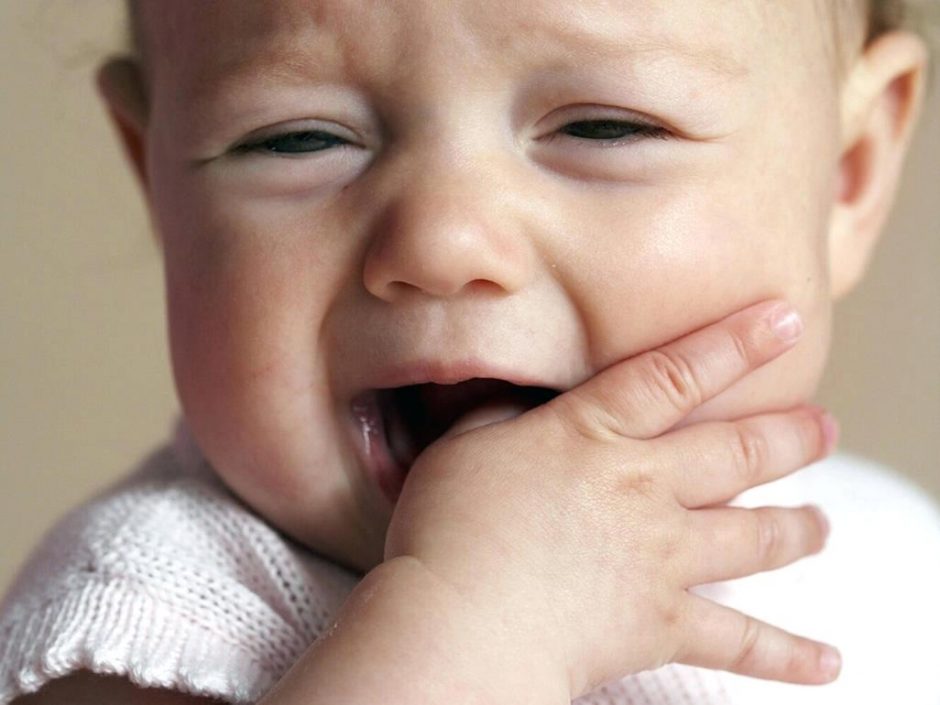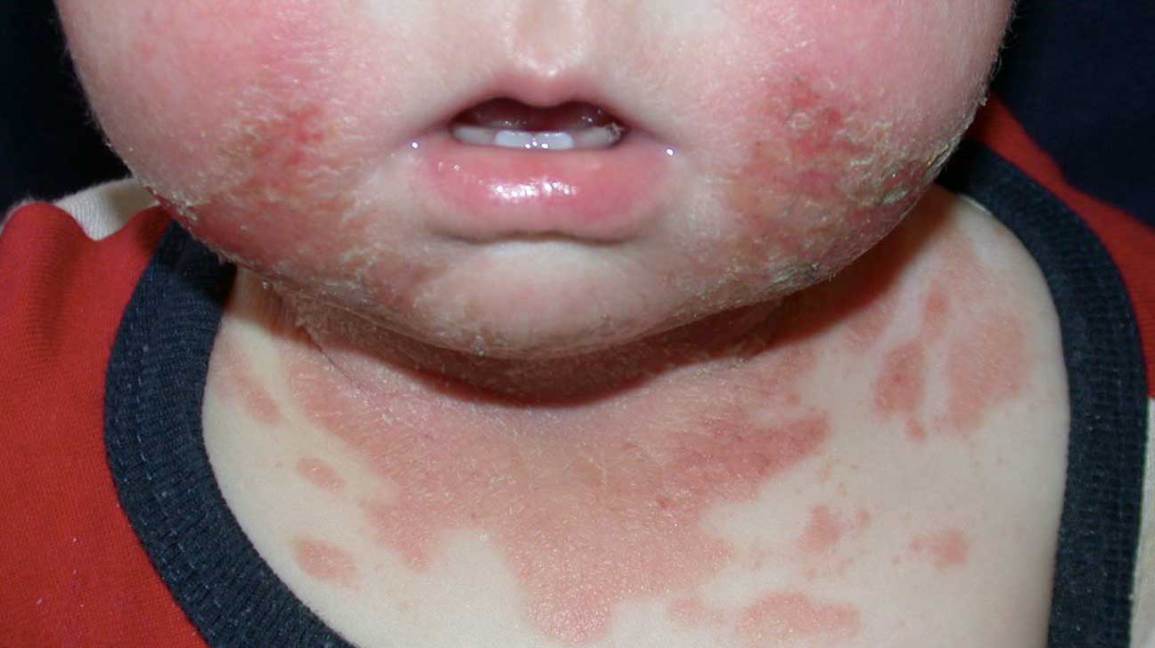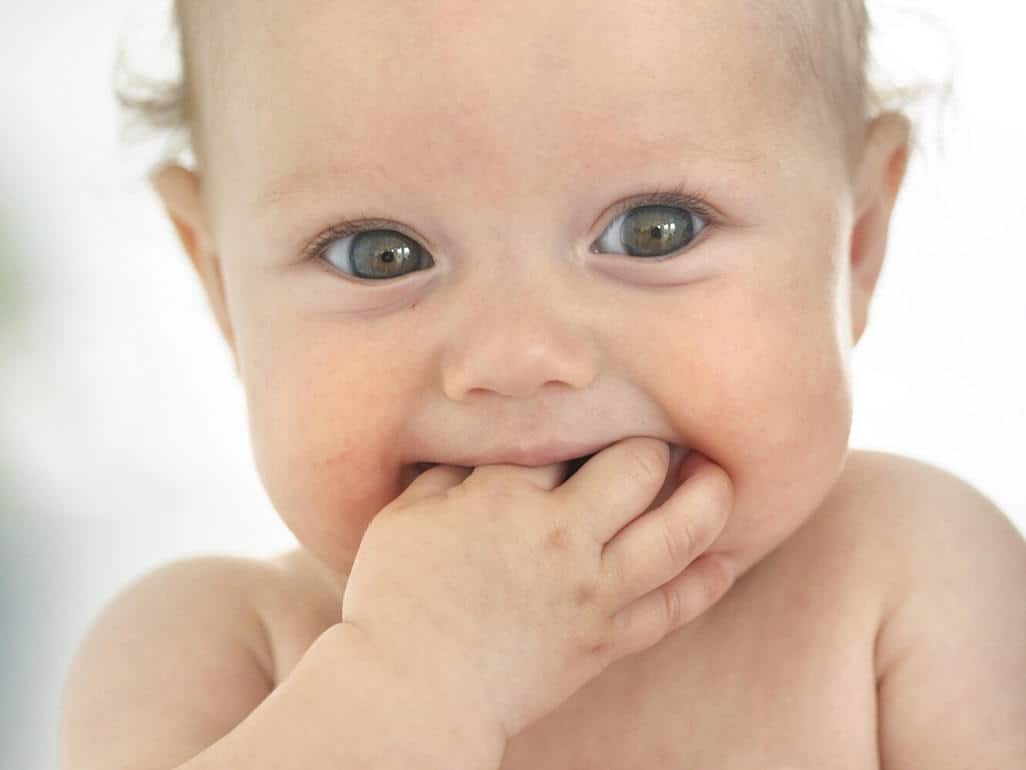You’ve got a fussy baby and none of your usual tricks are calming your baby. If you are thinking that teething could be the cause of your baby’s behavior, here is a comprehensive list of teething symptoms. However, keep in mind that:
- every baby is different in their development and teething is no exception—one baby’s teething symptoms may not be another’s.
- what may appear to be teething symptoms, could be illness. If you are at all unsure, check with your pediatrician.
The Most Common Teething Symptoms
-
Fussy and Irritable

As teeth cut through those baby gums, it is painful and this will make your baby fussy and irritable. If your baby is irritable, cuddle with your baby. Cuddle time can do wonders when a baby is teething.
-
Flushed/ Red Cheeks Or Chin
Rosy-red cheeks and/or chin are a common sign of teething. This can happen if the tooth is causing irritation.
-
Drooling A Lot More

All babies drool but teething babies drool much more. This constant drip or excess drool can cause chafing, chapping, redness, and rashes around your baby’s cheeks, mouth, chin, and neck. This kind of rash is often referred to as a teething rach, and it’s caused by the extra bacteria on your baby’s skin from the saliva.
To try to prevent a teething rash, wipe your baby’s face periodically with a gentle cloth. You can also apply a bit of baby moisturizer![]() or vaseline for extra protection.
or vaseline for extra protection.
-
Coughing Or Gagging
Occasionally, the extra drool that is produced during teething can cause a cough or a gag. No need to worry about this if your baby has no other signs of cold, flu, or allergies.
If your baby’s cough continues or if it is accompanied by a fever and cold or flu symptoms, call the pediatrician.
-
Crying
 As teeth are cutting their way through your baby’s gums, it hurts and your baby is likely to cry about it. The first teeth (and the molars) usually hurt the most. Some babies do get used to teething and as time progresses, they aren’t quite so bothered by teething (except for when the molars come in). If you feel that your baby needs pain medication, talk to the pediatrician about offering infant acetaminophen or ibuprofen.
As teeth are cutting their way through your baby’s gums, it hurts and your baby is likely to cry about it. The first teeth (and the molars) usually hurt the most. Some babies do get used to teething and as time progresses, they aren’t quite so bothered by teething (except for when the molars come in). If you feel that your baby needs pain medication, talk to the pediatrician about offering infant acetaminophen or ibuprofen.
-
Not Sleeping Well
Unfortunately, the painful teething process can keep your baby awake at night.
If your baby’s sleeping patterns have changed and you are finding it hard to settle your baby down at night, he/she could be teething.
It may be challenging to do so, but pediatricians recommend that you try to stick to your baby’s regular bedtime routine. Doing so offers a sense of comfort to an unsettled baby.
-
Red, Swollen, Or Bulging Gums
 Red, swollen gums are sure symptoms of teething. Gently rub your baby’s gums with your clean finger to soothe them.
Red, swollen gums are sure symptoms of teething. Gently rub your baby’s gums with your clean finger to soothe them.
-
Not Eating
When your baby’s gums are sore and swollen, sucking can be painful. Many teething remedies not only help to soothe your baby’s irritated gums, but it could also feed them, like mesh bags filled with frozen bananas or strawberries.
-
Pulling at Ears/ Rubbing Cheeks
 Ear pulling and cheek rubbing are common teething symptoms, so don’t be surprised if you see your baby tugging furiously at his/her ears or rubbing their cheeks or chin. This is because our ears, gums, and cheeks share nerve pathways, so an ache in the gums (particularly from erupting molars) can travel to the ears, cheeks, or chin.
Ear pulling and cheek rubbing are common teething symptoms, so don’t be surprised if you see your baby tugging furiously at his/her ears or rubbing their cheeks or chin. This is because our ears, gums, and cheeks share nerve pathways, so an ache in the gums (particularly from erupting molars) can travel to the ears, cheeks, or chin.
Keep in mind that babies with ear infections will also yank at their ears. Do check with the pediatrician if you are concerned about it being an ear infection, instead of teething.
-
Raised Temperature
According to WebMD, having a raised temperature while teething is normal. Fever is not.
Fevers are often associated with teething symptoms, but it really is quite rare. A Brazilian study followed 47 babies over eight months and discovered that some babies had slight increases in temperature on the day before and the day of a tooth erupting, but no fevers. (Fevers are temperatures of 100.4 F or above).
If your baby does develop a fever while teething, do see the pediatrician.
-
Chewing, Gnawing, And Biting Everything
The pressure from teeth cutting through the gums can be relieved by counterpressure, like gnawing, chewing, and biting. In fact, teething babies will chew on anything they can find. This is why teethers are so effective during teething.












